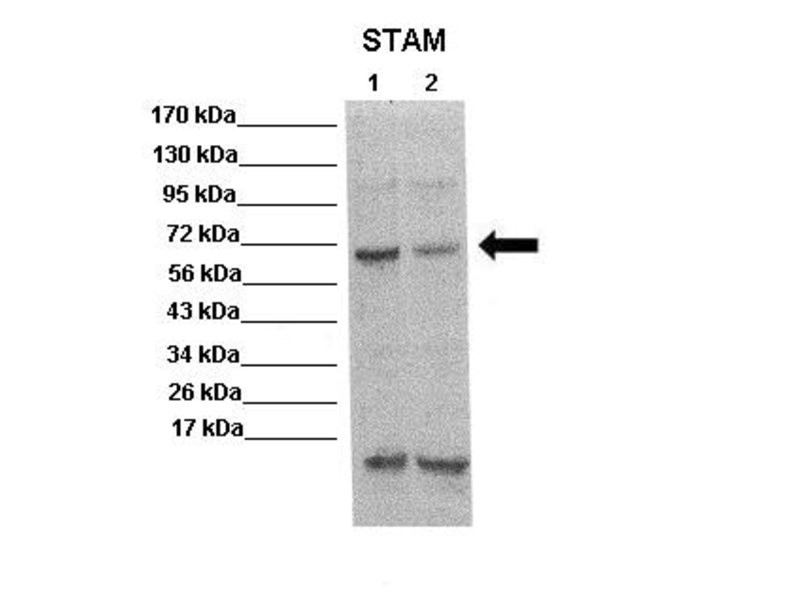When Dilution Is A Buy Signal
Post on: 21 Август, 2015 No Comment

(Editors’ Note: This article covers a micro-cap stock. Please be aware of the risks associated with these stocks.)
You don’t have to dig particularly deep to find shareholders complaining about dilution. Oftentimes, these complaints are valid, as in a company with a poor business model just trying to squeeze out some cash and stay alive a bit longer. Sometimes however, if done strategically and with the right timing, dilution can add to the value of a company. Distinguishing between dilution as a warning sign of distress and dilution as a show of strength is a skill crucial to being able to identify investment opportunity. This article seeks to explain why and how dilution can add to a company’s value, illustrating with three current examples.
An Overview of Dilution
When a company needs to raise capital for whatever purpose, it can issue additional stock to do so. To state the obvious, the additional stock carries a percentage ownership, and so whoever buys the stock takes ownership of a certain percentage of the company. Clearly, the only place this ownership can come from is the current shareholders. Therefore, on a fundamental level, when a company issues additional equity, the current shareholders lose a portion of their ownership to the new shareholders, whether the dilution is strategically placed or not.
The important thing to remember though is that, for shareholders, this does not necessarily reduce the value of their holding. If diluting is the best, most efficient way for a company to grow at a given time, then it can increase shareholder value. A company will not issue stock for nothing in return. What it receives in return, be it the assets of another company, the knowledge and leadership of a new CEO, or just plain cash capital, adds to the value of the company. While the original shareholders ownership represents a smaller portion of the company, if the overall value of the company has risen, the value of their holding could stay the same or even rise. It all depends upon the value of the assets received for the issue.
The Tesla Dilution
One of the best examples of this happening in recent times is the Tesla (NASDAQ:TSLA ) capital raise in May this year. The company raised $913M on May 17, comprising a $600 million convertible note offering and a $313 million secondary stock offering. The issue partially diluted the holdings of the then-current shareholders, but Tesla’s stock price closed up after the announcement, and has risen more than 100% since. The reason the stock closed up is that the cash that was raised enabled Tesla to repay in full (and early) its Department of Energy [DOE] loans.
Tesla had to repay its $465M DOE loan by 2022, but in doing so before 2018 garnered the added benefit of extinguishing millions of stock warrant contracts that, given current prices, carried highly dilutive exercise prices of $7.54 and $8.94 a share. Additionally, had it waited until 2022 to pay back the DOE, it probably would have had to do so at much higher interest rates. In other words, a small dilution in May helped the company avoid a much larger dilution in the future. It also greatly improved the company’s ability to report profits on its subsequent release, which fueled shareholder optimism and, in turn, the phenomenal growth in Tesla’s share price over the last three months. Since the move was obviously strategic and well timed, it added overall value rather than subtracting from it
The SolarCity Dilution
Remaining in the Muskoshphere where Musk’s cousin Lyndon Rive is CEO, consider the example of SolarCity (NASDAQ:SCTY ). On August 13, SolarCity announced it was buying the assets of Paramount Energy Solutions, the company behind the Paramount Solar brand. The assets cost SolarCity approximately $120M, the vast majority of which (around $116M) it paid in stock. A little more recently, on October 9, SolarCity announced it had also agreed to buy Zep Solar (NYSE:ZEP ) in a similar deal. Zep cost SolarCity $158M, $150M of which it paid in stock.
Upon completion of the Paramount deal on September 9, SolarCity was trading at a little under $30. At its last close, the company was trading at just below $57 (October 28). So why another close to 100% gain in the face of dilution to the tune of approximately 10%? Again, the answer lies in the value. Paramount’s expertise lies in direct marketing. The company is able to acquire solar customers at a much faster rate than SolarCity can, and at a much lower cost. The assumption is that shareholders believe that the cost savings, and the revenue growth from a faster growing customer base, is worth more to the company in the long term than the short-term benefits of not diluting. The reasoning behind the Zep purchase is of a similar nature. Namely, the company’s mounting equipment makes it much faster to install rooftop solar panels. In the face of the expected surge in demand as a result of the Paramount acquisition, cutting the installation time should serve to further fuel the company’s revenue growth.
The Chanticleer Dilution
The previous two dilutions made headlines everywhere. The financial world is practically in love with Elon Musk and anything and everything related to him. Fundamentally, what the previous two examples have shown is that, beyond dilution not necessarily eating into shareholder value, it could even serve as a buy signal, provided it is strategically placed and well timed. What follows is one more example, less known about and not at all making any major headlines, that nevertheless deserves attention as a potential opportunity signal.
Chanticleer Holdings (NASDAQ:HOTR ) is an international Hooters franchisee. As a startup that has never pulled a net profit, one would expect a serious dilution to be nothing more than a lengthening of the fuse until inevitable bankruptcy, as often happens in the small cap startup space. But surprisingly, Chanticleer has diluted heavily over the last month, and yet the stock is up 188% since its April lows. Even more interestingly, since September 30, Chanticleer has diluted its float to the tune of 38%, from 3.7M shares on September 30 to a current float of 5.1M. Despite this dilution, the company’s share price closed six cents higher yesterday (October 28) than it did on September 30.
What seems to have become the traditional response to dilution-shareholders questioning management incentives and a resulting sell off-simply hasn’t taken place. Why?
On September 30. Chanticleer acquired Roadside Burgers. In exchange for 100% of Roadside Burgers, Chanticleer issued 740,000 units to the current shareholders of American Roadside Burgers. Each unit consisted of one common stock and one five year, $5 warrant, that becomes exercisable after twelve months. On October 7. the company issued 426,667 units (each unit holding the same terms as in the American Roadside Deal), in a financing round that raised $1.6M. A little over a week later, on October 17. the company issued a further 240,000 units in a financing round that raised $0.9M.

Overall, Chanticleer increased its share float by approximately 1.4M in a little under three weeks. As already mentioned however, there have been no (public) shareholder gripes and the company’s stock price remains pretty much the same. The only logical conclusion to be drawn is that the long-term value that these dilutions bring to Chanticleer outweighs the short-term dilutive effect of the additional stock on its share price.
So what might this value be? First, let’s look at the American Roadside Deal. Chanticleer’s business model is to open Hooters locations internationally. It takes a strong American brand, and establishes it in foreign countries as Americana. The assumption here is that Chanticleer is aiming to export Roadside American Burgers in exactly the same way that it has exported Hooters. In fact, a recent interview with the company’s CEO Mike Pruitt stated quoted him explicitly as aiming at this very objective:
Our primary path will always be the growth of Hooters. A second path always that we contemplated was to look at other concepts in the U.S. that could be successful, that would not be in any way competitive to Hooters, but eventually utilizing those concepts in places around the world that we do business in.
In short, American Roadside Burgers presents Chanticleer with an already profitable US based chain of restaurants, which it can fit right to its Hooters expansion model. So, while dilutive, the acquisition pretty much doubled the company’s site count overnight, and offers it a platform from which to expand in the coming years. All in all, with last week’s $3.15M purchase of Hooters Nottingham, the company has brought its total Hooter + American Roadside Burger’s locations to a grand total to 14. The company also expects to open another location in Brazil next year, though plans on this are less concrete.
Given this, the logical assumption to the steady showing of HOTR despite a 38% dilution is that Chanticleer shareholders can see profitability just over the horizon, and are willing to accept a short-term percentage reduction in their holdings to bridge the gap between then and now. Indeed, next quarter’s earnings are just a few weeks away, where the public will get its first glimpse of American Roadside’s finances. If recent acquisitions prove to be a financial burden for Chanticleer, this could be a serious sign of danger. But if comprehensive loss continues to shrink as it has been over the past three quarters. these acquisitions could prove to be strategic and well-timed indeed. Either way, we will find out in a few weeks.
Conclusion
All said, the Tesla and SolarCity examples illustrate the upside of diluting into strength. If a company has a clear growth strategy and the dilution is based upon a logical motive, then far from being a sign of weakness, it can actually be a buy signal. Hindsight being 20/20 of course, this article was written after the major post dilution upside moves for Tesla and Solar City have already happened. On that note, the mute reaction of Chanticleer’s share price to the recent 38% dilution on a small float so far could be a sign, much like Telsa and SolarCity, that more upside is on the horizon. Further investigation into Chanticleer’s prospects suggests that this is indeed a strategic dilution. If this equity raise achieves its objectives, it could pull the company into profitability by next year.
Disclosure: I have no positions in any stocks mentioned, and no plans to initiate any positions within the next 72 hours. I wrote this article myself, and it expresses my own opinions. I am not receiving compensation for it. I have no business relationship with any company whose stock is mentioned in this article.














